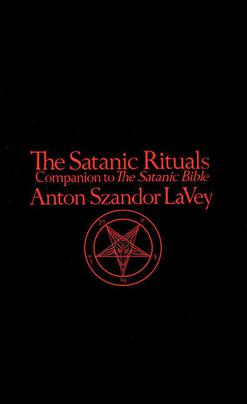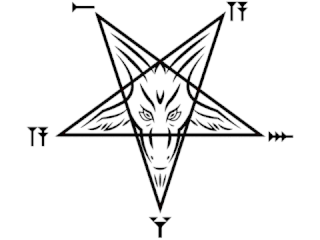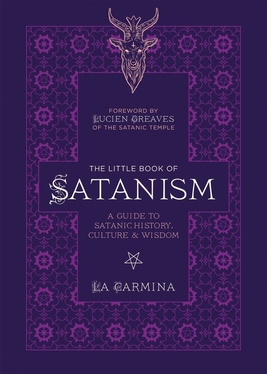
Satanism refers to a group of religious, ideological, and/or philosophical beliefs based on Satan – particularly his worship or veneration. Satan is commonly associated with the Devil in Christianity, a fallen angel often regarded as chief of the demons who tempt humans into sin. The phenomenon of Satanism shares "historical connections and family resemblances" with the Left Hand Path milieu of other occult figures such as Chaos, Hecate, Lilith, Lucifer, and Set. For centuries, the term was used by various Christian groups as an accusation against ideological opponents, a slur for assorted heretics, freethinkers, and pagans. By contrast, self-identified Satanism is a relatively modern phenomenon, largely attributed to the 1966 founding of the Church of Satan by Anton LaVey in the United States – an atheistic group that does not believe in a supernatural Satan.

The Church of Satan (CoS) is a religious organization dedicated to the religion of Satanism as defined by Anton Szandor LaVey. Founded in San Francisco in 1966, by LaVey, it is considered the "oldest satanic religion in continual existence", and more importantly the most influential, inspiring "numerous imitator and breakaway groups". According to the Church, Satanism has been "codified" as "a religion and philosophy" by LaVey and his church. Founded in an era when there was much public interest in the occult, witchcraft and Satanism, the church enjoyed a heyday for several years after its founding. Celebrities attended LaVey's satanic parties and he was invited on talk shows. His Satanic Bible sold nearly a million copies.

Anton Szandor LaVey was an American author, musician, and Satanist. He was the founder of the Church of Satan and the religion of Satanism. He authored several books, including The Satanic Bible, The Satanic Rituals, The Satanic Witch, The Devil's Notebook, and Satan Speaks! In addition, he released three albums, including The Satanic Mass, Satan Takes a Holiday, and Strange Music. He played a minor on-screen role and served as technical advisor for the 1975 film The Devil's Rain and served as host and narrator for Nick Bougas' 1989 mondo film Death Scenes.

A Black Mass is a ceremony celebrated by various Satanic groups. It has allegedly existed for centuries in different forms, and the modern form is intentionally a sacrilegious and blasphemous parody of a Catholic Mass.

The Satanic Bible is a collection of essays, observations, and rituals published by Anton LaVey in 1969. It is the central religious text of LaVeyan Satanism, and is considered the foundation of its philosophy and dogma. It has been described as the most important document to influence contemporary Satanism. Though The Satanic Bible is not considered to be sacred scripture in the way that the Christian Bible is to Christianity, LaVeyan Satanists regard it as an authoritative text as it is a contemporary text that has attained for them scriptural status. It extols the virtues of exploring one's own nature and instincts. Believers have been described as "atheistic Satanists" because they believe that God and Satan are not external entities, but rather projections of an individual's own personality—benevolent and stabilizing forces in their life. There have been thirty printings of The Satanic Bible, selling over a million copies.
LaVeyan Satanism is the name given to the form of Satanism promoted by American occultist and author Anton LaVey (1930–1997). LaVey founded the Church of Satan (CoS) in 1966 in San Francisco. Although LaVey is thought to have had more impact with his Satanic aesthetics of "colourful" rituals and "scandalous" clothes that created a "gigantic media circus", he also promoted his ideas in writings, such as the popular Satanic Bible. LaVeyan Satanism has been classified as a new religious movement and a form of Western esotericism by scholars of religion. LaVey's ideas have been said to weave together an array of sometimes "contradictory" "thinkers and tropes", combining "humanism, hedonism, aspects of pop psychology and the human potential movement", along with "a lot of showmanship", His ideas were heavily influenced by the ideas and writings of Friedrich Nietzsche, Ayn Rand and Arthur Desmond.

The Church of Satan: A History of the World's Most Notorious Religion is a book by Blanche Barton, published on November 1, 1990 by Hell's Kitchen Productions.

Diane Hegarty, was an American religious leader who, along with longtime partner Anton LaVey, co-founded the Church of Satan.

The Secret Life of a Satanist: The Authorized Biography of Anton LaVey is a biography on the life of Anton LaVey, the founder of LaVeyan Satanism and the Church of Satan, released in 1990 through Feral House publishing. The book is written by Blanche Barton, administrator of the Church of Satan and partner and confidant of LaVey."
Lucifer Rising (ISBN 0-85965-280-7) is a book written by author and Church of Satan priest Gavin Baddeley and published by Plexus Publishing in 1999. The book covers both the recent and ancient history of Satanism, and provides an examination of modern Satanist culture.

The Sigil of Baphomet is the official insignia of the Church of Satan, first appearing on the cover of The Satanic Mass album in 1968, and adorning the cover of The Satanic Bible the following year. The sigil has been called a "material pentagram" representational of carnality and earthy principles. The Church describes the symbol as the "...preeminent visual distillation of the iconoclastic philosophy of Satanism."

The Satanic Rituals is a book by Anton Szandor LaVey published in 1972 by Avon Books as a companion volume to The Satanic Bible. The book outlines nine rituals and ceremonies intended for group performance, with an introductory essay to each. Some of the rites presented are inspired by other groups, such as the Yezidis, Freemasons, Knights Templar and Order of the Illuminati, and some inspired by fictional works.

The First Satanic Church is an organization founded by Karla LaVey on October 31, 1999, in San Francisco, California. The church is dedicated to LaVeyan Satanism as codified by Anton LaVey in The Satanic Bible. The church's stated mission is to carry on the legacy of Anton LaVey through "the study of Satanism and the occult sciences". For over a decade the church operated The 600 Club, a now-defunct Internet forum dedicated to discussions of Satanism.

Theistic Satanism, otherwise referred to as religious Satanism, spiritual Satanism, or traditional Satanism, is an umbrella term for religious groups that consider Satan, the Devil, to objectively exist as a deity, supernatural entity, or spiritual being worthy of worship or reverence, whom individuals may contact and convene with, in contrast to the atheistic archetype, metaphor, or symbol found in LaVeyan Satanism.
The Infernal Names is a compiled list of adversarial or antihero figures from mythology intended for use in Satanic ritual. The following names are as listed in The Satanic Bible (1969), written by Church of Satan founder Anton Szandor LaVey. When calling the names, all of them may be recited, or a given number of those most significant to the respective working may be chosen.
Selfism refers to any philosophy, theory, doctrine, or tendency that upholds explicitly selfish principles as being desirable. The term is usually used pejoratively.
Greater and lesser magic, within LaVeyan Satanism, designate types of beliefs with the term greater magic applying to ritual practice meant as psychodramatic catharsis to focus one's emotions for a specific purpose and lesser magic applied to the practice of manipulation by means of applied psychology and glamour to bend an individual or situation to one's will.

Zeena Galatea Schreck, known professionally by her mononymous artist name ZEENA, is a Berlin-based American visual and musical artist, author and the spiritual leader of the Sethian Liberation Movement (SLM), which she founded in 2002.

Joy of Satan Ministries, also referred to as Joy of Satan (JoS), is a website and western esoteric occult organization founded in 2002 by Andrea M. Dietrich. Joy of Satan Ministries advocates "Spiritual Satanism", an ideology that presents a synthesis of Theistic Satanism, Nazism, Gnosticism, Paganism, Western esotericism, UFO conspiracy theories and extraterrestrial beliefs similar to those popularized by Zecharia Sitchin and David Icke.

The Little Book of Satanism: A Guide to Satanic History, Culture & Wisdom is a 2022 nonfiction book by author La Carmina about Satanism’s historical evolution and religious practices. The book includes a foreword by Lucien Greaves, the spokesperson and co-founder of The Satanic Temple.













